Vinphonic
10-03-2017, 03:24 PM
The Legacy of Japanese Composers
Naoki Sato
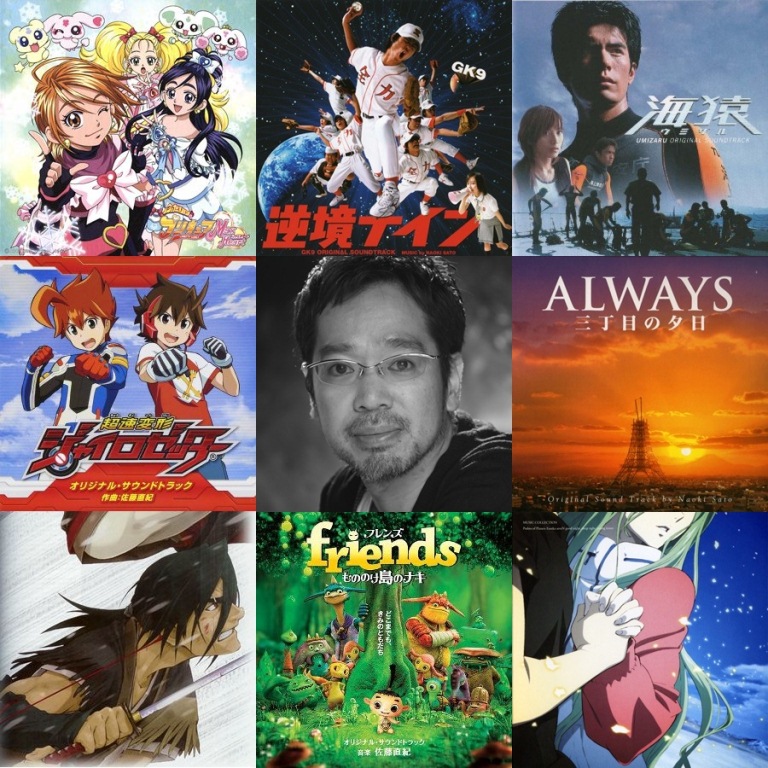
Naoki Sato is the most Hollywoodesque composer Japan has to offer. He’s a true workhorse, his body of work enormous, and you find every flavor from the Silver to the Zimmer age in his work. His music does not just sound vaguely like Horner or Silvestri, more often than not he pays direct homage to their style and even little winks to their themes. But certain scores also reminds me of Morricone in many ways with his taste for vocals and focus on Leitmotif above all else.
Like Horner, his music is upfront and right in your face, he deals in absolute moments rather than complex mechanisms that can absolutely wreck you if you are unprepared.
It is astounding that a man who speaks so profoundly with a Hollywood composer voice did in fact not work with ANY famous orchestra aside from the NHK Symphony, and not even for a whole score. I guess he really doesn’t like recording overseas and judging by how little online presence he has he seems to be the type that avoids the spotlight and would rather work with local studio ensembles than prestigious orchestras.
BUT by working day and night, year after year, there’s no avoiding the fact that he wrote dozens of crappy scores too. Sure, they function on a basic level and will cover the bills, but noteworthy they are certainly not. Ironic that if he became a Hollywood composer today, his worst output would be the only acceptable standard now for major projects. We would never have heard the true Naoki Sato, a whole other person and composer “from his brother Naoki Syntho” (tangotreats) if he had made it over there.
If you look at all the glorious and timeless scores Sato wrote with local studio ensembles for projects on a much MUCH smaller scale, one has to wonder what other Hollywood composers who we think are terrible right now could potentially write glorious stuff IF only the environment would allow it. If I only came in contact with Sato’s “Syntho” persona and listeneded to all the Zimmeresque work he has done I would have written him off as nothing special long ago. The classical trained master of big moments would have never graced my ears.
But nonetheless I’m grateful that on the other side of the world Horner’s Legacy of “the big Hollywood moment” lives on:
Magical Music Busters
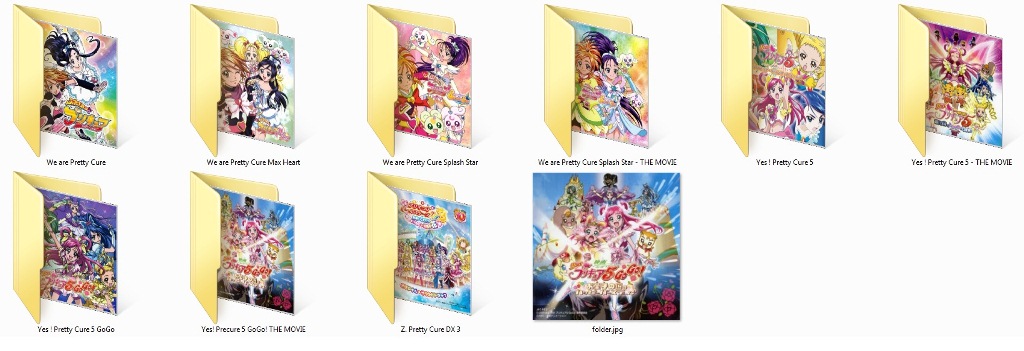
The biggest Japanese franchise Sato scored music for was Pretty Cure , a little sister to Japanese famous Super Sentai and Kamen Rider franchises. Sato was the composer for five seasons straight as well as several movies and compilation films.
After years of neglecting them I have found much more enjoyment as I’ve grown older. Sato scored it in best manner of old Hollywood and Disney cartoons but hypercharged with vigor and wackiness. A clear focus is on the drumkit as well.
He wrote some stellar pieces for the franchise among hours upon hours of entertaining bravado. At his best he even gives Takaki a run for his money. With the DX3 movie score he even gives his involvement proper closure with a rousing finish and I wonder if Takaki will eventually top his output. I also have to say it: Early Precure has some smashing songs under its belt, and it’s primarily thanks to Sato’s involvement. It makes me wish that every anime series opening and ending should be done by the series composer a well. Just look at what Sahashi did.
Psalms of Heroism

Eureka seveN is a special project because it’s the very first Sato score I’ve ever heard and still one of his best TV scores all things considered. It got everything to make the orchestral fan jump with joy. It’s full of moments of absolute beauty, tragedy and heroism. The only downside is no strong leitmotif but oh boy, does he make up for that with the movie. The movie score wrecked me, it’s heartfelt themes stroke right into my soul. Later I found out that he wrote one cohesive score but separated it across two different projects. Don’t believe me, then listen to my new version where I combined the two scores so that it makes sense structurally and emotionally. They even have the EXACT SAME THEME, not even alterations. As a cohesive whole this is my favorite symphonic score Sato has done. Every time it still wrecks me. Be Invoked.
The lighting stroke twice with Heroic Age. Sato wrote one of the most majestic piece ever composed for media. The grandeur of Space is certainly encapsulated by the music. It has classic waltzes as well as bombastic Hollywood action. Again, I’ve arranged it like a proper film score.
Machine Robo Rescue is a frolic superhero adventure score in full Williams mode. Japan has a special tendency to employ this type of sound for children’s shows and I hope this practice never fades away. This score just puts a big smile on your face, this kind of musical fun is just absent from modern superhero scores. Shameless optimism and melody and surprisingly lyrical romantic themes galore.
Sword of the Stranger sounds almost like the Japanese answer to a serious Morricone western. Frenetic primal tribal drum action mixed with a single Theme full of romanticism and heroism. It’s earnest film music with one of the greatest “final duel” pieces in anime history.
X was Sato’s anime debut and to this day it has one of the best themes Sato has written. It is pure Japanese melody this time pared with the best of early orchestral Zimmer. Not to mention the symphonic romantic pieces.
The Glory of Hollywood
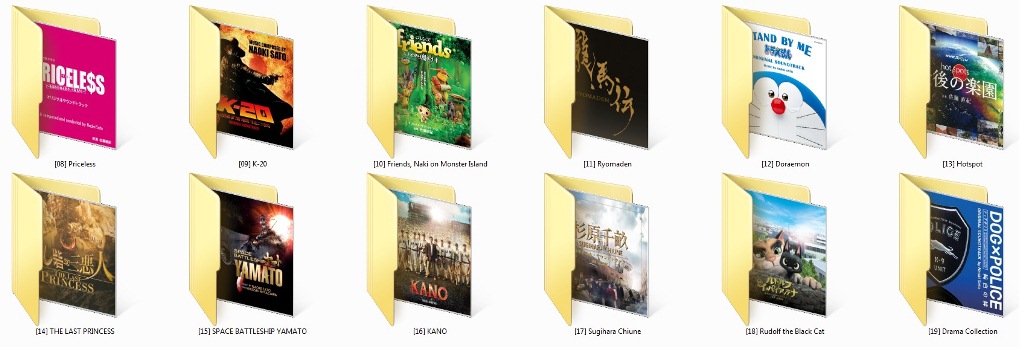
Pricless is perhaps the biggest ensemble Sato ever employed and a symphonic film score par excellence: Piano concerto moments, tone poem antics and glorious Hollywood action. Perhaps Sato at his most refined.
K-20 is a bombastic superhero score straight from from the 80s with the best use of Sato’s trademark choir stabs and superb thematic material. A proper love theme inclusive. It has moments where even Horner would have trouble making it more grandiose than it already is.
Friends: Naki on Monster Island is another epic Hollywood score with more Japanese flavor and a little religious touch. Also featuring a best of from 90s Horner moments.
Ryomaden is right up there with his very best TV scores. Stripped of (almost) all Zimmerism, what remains are over 60 minutes of pure Hollywood glory with sweeping themes and grandiose moments.
Stand By Me truly excels during the adolescence parts. That gentle and fragile piano with those familiar chords pulls straight at your heartstrings. Sweeping romantic themes and symphonic action in combination with upbeat guitar tracks form a sweet little score full of heart.
Rudolph and Ippaiattena is Sato in jolly early 3D movie mode, with his usual grandiose moments but also many playful intermezzi.
Sugihara Chiune deserves special mention for its symphonic character and British sound. It’s a grand pastoral journey. Reflective of the human soul.
The rest all fall under the category of good old Hollywood homages, whether they use Miyagawa’s famous themes or Horner’s Troy. Not the greatest of scores but good standard nonetheless. Some sublime moments in the Drama Collection as well.
Serene Beauty
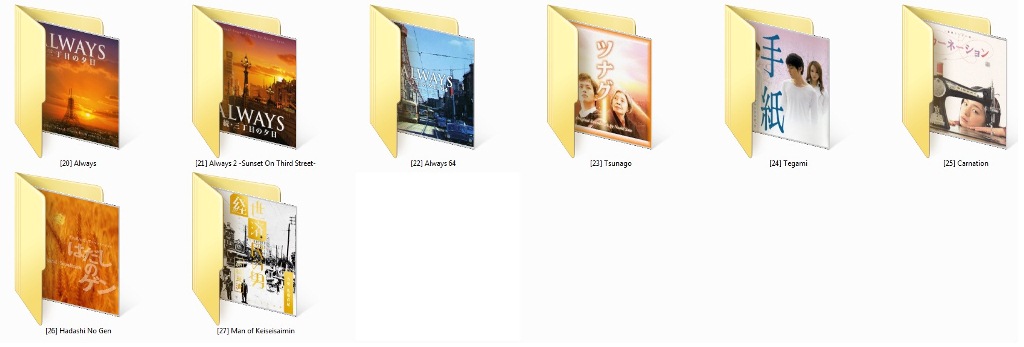
The Always trilogy is full of sweeping romantic themes and playful moments. Hints of romantic piano concerto are present as well as some stellar pieces for guitar and orchestra. Perfect for the Holiday season. For Always 2 Sato even arranges Ikufube’s Godzilla theme.
Tsunago will wreck you. Grand romantic Hollywood moments with beautiful string work. Pieces like “Important person” and “Those who are left behind” are just divine. What I would give to hear those moments on the big screen again.
Tegami is Sato at his most intimate. It deeply touches your soul with gentle piano and woodwind pieces.
Carnation is pure good old classic cinema, almost sounds like a British film. Full of frolic adventure, symphonic character and pastoral moments.
Man of Keiseisaimin is one of Sato’s best themes and a love letter to the sound of John Barry. Great stuff.
Let’s go crazy!!!
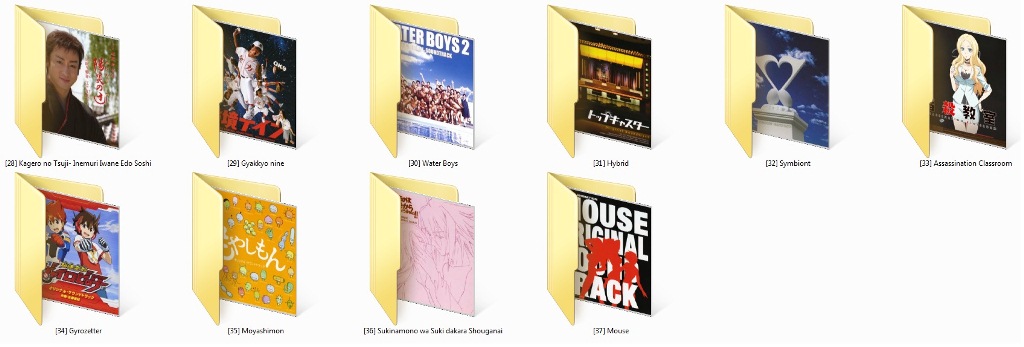
Kagero no Tsuji: Flamenco Guitar, Body Percussion, Spanish flair… for a samurai movie, of course. I really love this one. Some absolutely beautiful symphonic moments and lyrical themes.
GK9: Gyakkyo nine. This is where the fun truly begins: A hypercharged Hollywood score, a rollercoaster of the very best from the 80s and 90s. Mask of Zorro galore and a piece like “Nine’s dream” doesn’t even hide the fact we’re in deep Americana territory. A score as equally inspirational as it is pure fun. This is what Hollywood used to sound like. No wonder they are so gloomy and grim over there if “Man's ball of indomitable fighting spirit” is not playing in theaters.
Water Boys continues the inspirational fun. Naoki Sato should compose for the Toyko Olympics because no one else can capture the spirit of fun and excitement of sport like he can.
Assassination Classroom continues the craziness with moments of pure Hollywood grandeur and romantic piano pieces mixed with frenetic Jazz and jolly rock and guitar tracks.
Gyrozetter is a return to Pretty Cure level of ridiculous vigor and joy. Jazzy and Synthy with pure Super Sentai badassery. The orchestral parts evoke Machine Robo a little. A fun ride.
The last three are very unusual Sato scores with quirky marches and Jazz and overall strangeness. He can be groovy too if he wants to.
Hybrid & Symbiont are compilations of various drama scores with that particular craziness of epic Hollywood melody and pop beat.
Modern Mosaic
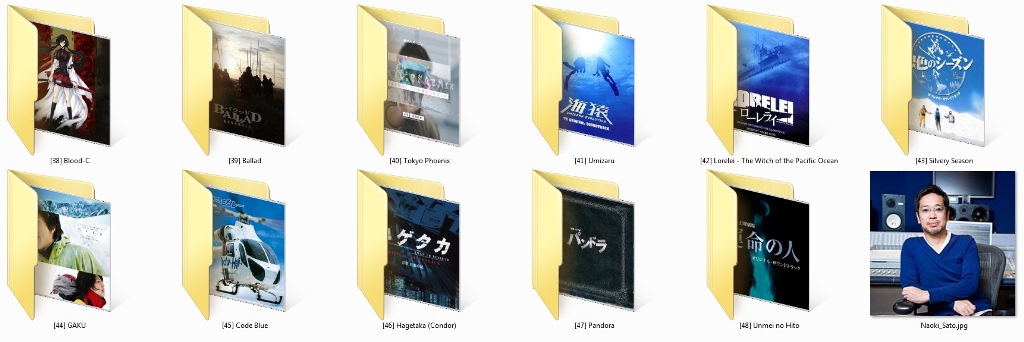
This is Sato embracing the idioms of the modern scoring style and playing the game better than the originators. His classical writing knowledge still shines through: Blood-C is full of romantic string pieces amidst the banging percussion and Tokyo Phoenix has enough classical film score elements to be worthwhile. Lorelei and Umizaru also retain Sato’s excellent big moments. Uplifting moments and blood-pumping themes are still present here and the full orchestra is used. All is still well although I can’t shake off the feeling that for most of them he does not really want to write in this style and only does it for the paycheck. I just don’t get the same feeling I get from Iwasaki, who really takes an interest in Zimmer stuff. Sato always strikes me as a traditionalist who loves the likes of Horner.
So that concludes the rather big collection for a composer who inherited the very essence of the great Hollywood Age. I just hope that in the future he gets his hands on a world-famous orchestra and knocks it out of the park. A Gundam show with classic Sato would be a dream come true for all film score enthusiasts.
Composer Profile: Naoki Sato
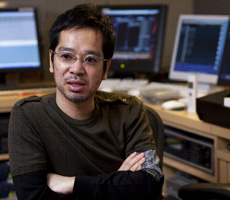
Trademark: Hollywood Composer, Master of Big Moments, Horner fanboy
Education: Tōkyō Geijutsu Daigaku
Style: Classical Repertoire, Silver Age Film Score, Zimmer Age Film Score
Similar Western Composer: James Horner, Alan Silvestri, Ennio Morricone
LINK IN DESCRIPTION (https://mega.nz/#!5vAGmKxD!1AjWxQB79BqKWp9IcKwmxXP1ElTtTJrKF3yoWK2drFc)
Naoki Sato

Naoki Sato is the most Hollywoodesque composer Japan has to offer. He’s a true workhorse, his body of work enormous, and you find every flavor from the Silver to the Zimmer age in his work. His music does not just sound vaguely like Horner or Silvestri, more often than not he pays direct homage to their style and even little winks to their themes. But certain scores also reminds me of Morricone in many ways with his taste for vocals and focus on Leitmotif above all else.
Like Horner, his music is upfront and right in your face, he deals in absolute moments rather than complex mechanisms that can absolutely wreck you if you are unprepared.
It is astounding that a man who speaks so profoundly with a Hollywood composer voice did in fact not work with ANY famous orchestra aside from the NHK Symphony, and not even for a whole score. I guess he really doesn’t like recording overseas and judging by how little online presence he has he seems to be the type that avoids the spotlight and would rather work with local studio ensembles than prestigious orchestras.
BUT by working day and night, year after year, there’s no avoiding the fact that he wrote dozens of crappy scores too. Sure, they function on a basic level and will cover the bills, but noteworthy they are certainly not. Ironic that if he became a Hollywood composer today, his worst output would be the only acceptable standard now for major projects. We would never have heard the true Naoki Sato, a whole other person and composer “from his brother Naoki Syntho” (tangotreats) if he had made it over there.
If you look at all the glorious and timeless scores Sato wrote with local studio ensembles for projects on a much MUCH smaller scale, one has to wonder what other Hollywood composers who we think are terrible right now could potentially write glorious stuff IF only the environment would allow it. If I only came in contact with Sato’s “Syntho” persona and listeneded to all the Zimmeresque work he has done I would have written him off as nothing special long ago. The classical trained master of big moments would have never graced my ears.
But nonetheless I’m grateful that on the other side of the world Horner’s Legacy of “the big Hollywood moment” lives on:
Magical Music Busters

The biggest Japanese franchise Sato scored music for was Pretty Cure , a little sister to Japanese famous Super Sentai and Kamen Rider franchises. Sato was the composer for five seasons straight as well as several movies and compilation films.
After years of neglecting them I have found much more enjoyment as I’ve grown older. Sato scored it in best manner of old Hollywood and Disney cartoons but hypercharged with vigor and wackiness. A clear focus is on the drumkit as well.
He wrote some stellar pieces for the franchise among hours upon hours of entertaining bravado. At his best he even gives Takaki a run for his money. With the DX3 movie score he even gives his involvement proper closure with a rousing finish and I wonder if Takaki will eventually top his output. I also have to say it: Early Precure has some smashing songs under its belt, and it’s primarily thanks to Sato’s involvement. It makes me wish that every anime series opening and ending should be done by the series composer a well. Just look at what Sahashi did.
Psalms of Heroism

Eureka seveN is a special project because it’s the very first Sato score I’ve ever heard and still one of his best TV scores all things considered. It got everything to make the orchestral fan jump with joy. It’s full of moments of absolute beauty, tragedy and heroism. The only downside is no strong leitmotif but oh boy, does he make up for that with the movie. The movie score wrecked me, it’s heartfelt themes stroke right into my soul. Later I found out that he wrote one cohesive score but separated it across two different projects. Don’t believe me, then listen to my new version where I combined the two scores so that it makes sense structurally and emotionally. They even have the EXACT SAME THEME, not even alterations. As a cohesive whole this is my favorite symphonic score Sato has done. Every time it still wrecks me. Be Invoked.
The lighting stroke twice with Heroic Age. Sato wrote one of the most majestic piece ever composed for media. The grandeur of Space is certainly encapsulated by the music. It has classic waltzes as well as bombastic Hollywood action. Again, I’ve arranged it like a proper film score.
Machine Robo Rescue is a frolic superhero adventure score in full Williams mode. Japan has a special tendency to employ this type of sound for children’s shows and I hope this practice never fades away. This score just puts a big smile on your face, this kind of musical fun is just absent from modern superhero scores. Shameless optimism and melody and surprisingly lyrical romantic themes galore.
Sword of the Stranger sounds almost like the Japanese answer to a serious Morricone western. Frenetic primal tribal drum action mixed with a single Theme full of romanticism and heroism. It’s earnest film music with one of the greatest “final duel” pieces in anime history.
X was Sato’s anime debut and to this day it has one of the best themes Sato has written. It is pure Japanese melody this time pared with the best of early orchestral Zimmer. Not to mention the symphonic romantic pieces.
The Glory of Hollywood

Pricless is perhaps the biggest ensemble Sato ever employed and a symphonic film score par excellence: Piano concerto moments, tone poem antics and glorious Hollywood action. Perhaps Sato at his most refined.
K-20 is a bombastic superhero score straight from from the 80s with the best use of Sato’s trademark choir stabs and superb thematic material. A proper love theme inclusive. It has moments where even Horner would have trouble making it more grandiose than it already is.
Friends: Naki on Monster Island is another epic Hollywood score with more Japanese flavor and a little religious touch. Also featuring a best of from 90s Horner moments.
Ryomaden is right up there with his very best TV scores. Stripped of (almost) all Zimmerism, what remains are over 60 minutes of pure Hollywood glory with sweeping themes and grandiose moments.
Stand By Me truly excels during the adolescence parts. That gentle and fragile piano with those familiar chords pulls straight at your heartstrings. Sweeping romantic themes and symphonic action in combination with upbeat guitar tracks form a sweet little score full of heart.
Rudolph and Ippaiattena is Sato in jolly early 3D movie mode, with his usual grandiose moments but also many playful intermezzi.
Sugihara Chiune deserves special mention for its symphonic character and British sound. It’s a grand pastoral journey. Reflective of the human soul.
The rest all fall under the category of good old Hollywood homages, whether they use Miyagawa’s famous themes or Horner’s Troy. Not the greatest of scores but good standard nonetheless. Some sublime moments in the Drama Collection as well.
Serene Beauty

The Always trilogy is full of sweeping romantic themes and playful moments. Hints of romantic piano concerto are present as well as some stellar pieces for guitar and orchestra. Perfect for the Holiday season. For Always 2 Sato even arranges Ikufube’s Godzilla theme.
Tsunago will wreck you. Grand romantic Hollywood moments with beautiful string work. Pieces like “Important person” and “Those who are left behind” are just divine. What I would give to hear those moments on the big screen again.
Tegami is Sato at his most intimate. It deeply touches your soul with gentle piano and woodwind pieces.
Carnation is pure good old classic cinema, almost sounds like a British film. Full of frolic adventure, symphonic character and pastoral moments.
Man of Keiseisaimin is one of Sato’s best themes and a love letter to the sound of John Barry. Great stuff.
Let’s go crazy!!!

Kagero no Tsuji: Flamenco Guitar, Body Percussion, Spanish flair… for a samurai movie, of course. I really love this one. Some absolutely beautiful symphonic moments and lyrical themes.
GK9: Gyakkyo nine. This is where the fun truly begins: A hypercharged Hollywood score, a rollercoaster of the very best from the 80s and 90s. Mask of Zorro galore and a piece like “Nine’s dream” doesn’t even hide the fact we’re in deep Americana territory. A score as equally inspirational as it is pure fun. This is what Hollywood used to sound like. No wonder they are so gloomy and grim over there if “Man's ball of indomitable fighting spirit” is not playing in theaters.
Water Boys continues the inspirational fun. Naoki Sato should compose for the Toyko Olympics because no one else can capture the spirit of fun and excitement of sport like he can.
Assassination Classroom continues the craziness with moments of pure Hollywood grandeur and romantic piano pieces mixed with frenetic Jazz and jolly rock and guitar tracks.
Gyrozetter is a return to Pretty Cure level of ridiculous vigor and joy. Jazzy and Synthy with pure Super Sentai badassery. The orchestral parts evoke Machine Robo a little. A fun ride.
The last three are very unusual Sato scores with quirky marches and Jazz and overall strangeness. He can be groovy too if he wants to.
Hybrid & Symbiont are compilations of various drama scores with that particular craziness of epic Hollywood melody and pop beat.
Modern Mosaic

This is Sato embracing the idioms of the modern scoring style and playing the game better than the originators. His classical writing knowledge still shines through: Blood-C is full of romantic string pieces amidst the banging percussion and Tokyo Phoenix has enough classical film score elements to be worthwhile. Lorelei and Umizaru also retain Sato’s excellent big moments. Uplifting moments and blood-pumping themes are still present here and the full orchestra is used. All is still well although I can’t shake off the feeling that for most of them he does not really want to write in this style and only does it for the paycheck. I just don’t get the same feeling I get from Iwasaki, who really takes an interest in Zimmer stuff. Sato always strikes me as a traditionalist who loves the likes of Horner.
So that concludes the rather big collection for a composer who inherited the very essence of the great Hollywood Age. I just hope that in the future he gets his hands on a world-famous orchestra and knocks it out of the park. A Gundam show with classic Sato would be a dream come true for all film score enthusiasts.
Composer Profile: Naoki Sato

Trademark: Hollywood Composer, Master of Big Moments, Horner fanboy
Education: Tōkyō Geijutsu Daigaku
Style: Classical Repertoire, Silver Age Film Score, Zimmer Age Film Score
Similar Western Composer: James Horner, Alan Silvestri, Ennio Morricone
LINK IN DESCRIPTION (https://mega.nz/#!5vAGmKxD!1AjWxQB79BqKWp9IcKwmxXP1ElTtTJrKF3yoWK2drFc)